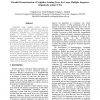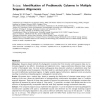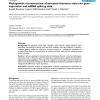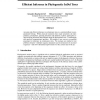57 search results - page 5 / 12 » A Multi-Neighbor-Joining Approach for Phylogenetic Tree Reco... |
IPPS
2009
IEEE
14 years 2 months ago
2009
IEEE
Computing large multiple protein sequence alignments using progressive alignment tools such as ClustalW requires several hours on state-of-the-art workstations. ClustalW uses a th...
CSB
2003
IEEE
14 years 28 days ago
2003
IEEE
A new and essentially simple method to reconstruct prokaryotic phylogenetic trees from their complete genome data without using sequence alignment is proposed. It is based on the ...
ALMOB
2008
13 years 7 months ago
2008
Motivation: Sequence-based methods for phylogenetic reconstruction from (nucleic acid) sequence data are notoriously plagued by two effects: homoplasies and alignment errors. Larg...
BMCBI
2005
2005
Phylogenetic reconstruction of ancestral character states for gene expression and mRNA splicing data
13 years 7 months ago
Background: As genomes evolve after speciation, gene content, coding sequence, gene expression, and splicing all diverge with time from ancestors with close relatives. A minimum e...
NIPS
2008
13 years 9 months ago
2008
Accurate and efficient inference in evolutionary trees is a central problem in computational biology. While classical treatments have made unrealistic site independence assumption...




